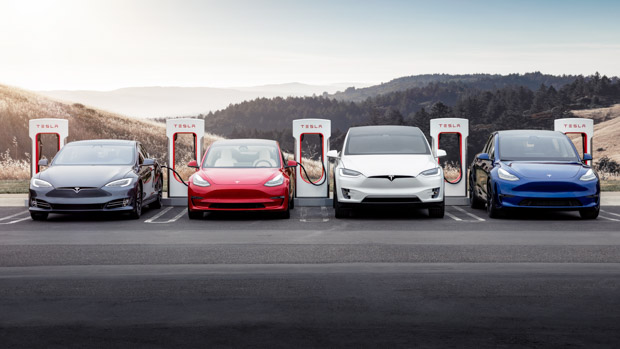-
Car Reviews
- All reviews
- Midsize SUVs
- Small cars
- Utes
- Small SUVs
- Large SUVs
- Large cars
- Sports SUVs
- Sports cars
- Vans
Latest reviews
- Car News
-
Car Comparisons
Latest comparisons
- Chasing Deals
An American university has developed a charge cable that is four times faster than the cable used in the Tesla V3 Supercharger
A super-fast charging cable has been developed in the US that could enable an electric car to be recharged in under five minutes.
The patent-pending technology created by Purdue University addresses the excessive heat created by the charging process, which has provided a major challenge for ultra-fast charging speeds.
In comparison to the Tesla Supercharger V3, the Purdue charger can deliver 4.68 times the current. That is impressive considering the Tesla Supercharger is one of the fastest charging systems currently in use.
PH.D candidate V.S. Devahdhanush said that the team at Purdue has been able to successfully deliver a steady passage of the 2,438-amp current through a 0.25-inch wire. With a three metre cable, 24.22kW of heat is removed via the cooling cable to provide a 2438-amp current.
Purdue University says that most charging stations today can deliver current up to 520-amps. Charging times can vary from 20 minutes to several hours depending on the level of voltage and size of the battery.
The fastest charging EV currently on the market here in Australia is the Hyundai Ioniq 5, which can charge from 10 to 80 percent in just 18 minutes when hooked up to a 350kW charging station.
Some of the main factors that influence charge times include the input rating of the EV’s battery, the power supply’s output rating and the charging cable itself.
This means that even if Purdue’s new design was proven, lagging development of batteries could still limit the speed at which energy can flow into the car.
For example, the fastest EV charger available in Australia is a 350kW DC fast charger used by both the ChargeFox and Evie networks. However, the Hyundai Ioniq 5 and Kia EV6 are the only vehicles on sale in Australia capable of reaching the headline figure
While most charging cables utilise liquid cooling to keep temperatures down, the Purdue system uses a liquid-to-vapour cooling system.
To explain this, a heat transfer fluid flows through the cable until such time that the liquid begins to boil, creating small vapour bubbles.
These vapour bubbles slowly condense back into a liquid and the overall coolant temperature is then lowered in a condenser at the charging station.
Without a cooling system, the heat effect on the cable is obvious. It becomes too hot for a human to handle and, at super high temperatures, would cause the wires to burn out and therefore cause a fire.
Purdue University says it is working with several charging vendors to trial their fast charging technology in the real world.
Latest news
About Chasing cars
Chasing Cars reviews are 100% independent.
Because we are powered by Budget Direct Insurance, we don’t receive advertising or sales revenue from car manufacturers.
We’re truly independent – giving you Australia’s best car reviews.



